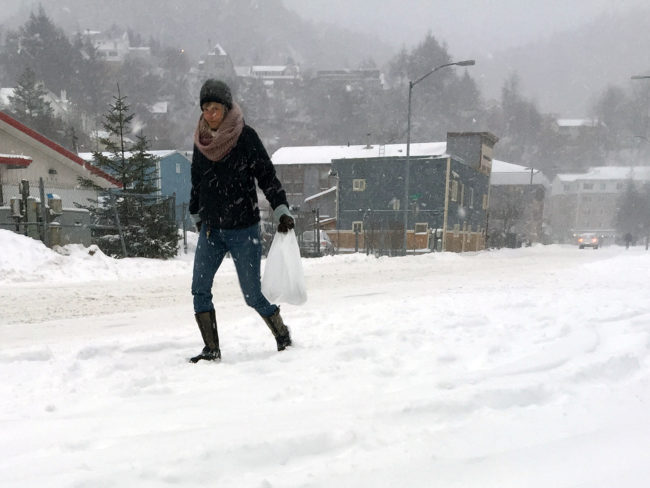
It’s winter again in Alaska. There’s snow on the ground across most of the state. Some places, notably Juneau, have a lot of fresh snow. It’s cold too, and those below normal temperatures are expected to stick around for the rest of the month.
Brian Brettschneider is a climatologist in Anchorage who closely tracks Alaska climate data and trends. Alaska’s Energy Desk is checking in with him regularly as part of the segment, Ask A Climatologist.
He spoke with Energy Desk editor Annie Feidt.
Interview Transcript
Brian: This is the coldest statewide that we’ve been since Nov. 16–18 of 2015.
Annie: How cold has it been across the state?
Brian: With very few exceptions, everywhere has been below normal. And it’s pretty uniform across the state. The temperatures aren’t uniform, but the magnitude of the cold is pretty uniform across the state.
Annie: In terms of coping with the cold, what have you observed or seen or heard?
Brian: People feel like we’ve got winter again, so I think there’s this initial euphoria of sorts that the several years of above normal winter temperatures are finally relenting. People are feeling like it’s Alaska again.
Annie: Is the cold and snow expected to stick around?
Brian: It’s looking like it will. The new December monthly forecast for Alaska had quite a flip. Now, just about the entire state is supposed to be below normal. It’s a dramatic change from what was forecast just a few weeks earlier. But the state has had 14 consecutive months where it’s been above normal so it’s been warm after warm after warm. Finally, it looks like we may break that string and for a change have a colder than normal month.
Annie: What caused forecasters to make that flip?
Brian: A couple of things. One is La Niña. La Niña did formally kick in, so we’ve had this cooling down in the waters of the tropical Pacific and that has this cascading effect throughout the atmosphere. We generally end up with winds that blow out of the northwest and north and drag down colder air from even higher latitudes. That’s what the models have really captured in the last few weeks.
Annie Feidt is the broadcast managing editor at Alaska Public Media. Reach her at afeidt@alaskapublic.org. Read more about Annie here.





